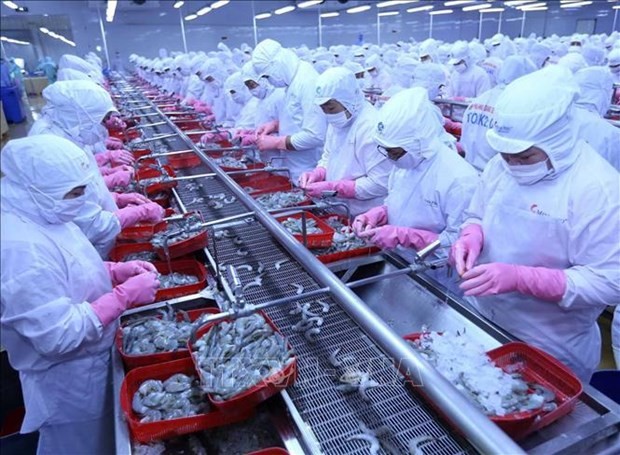
Vietnam fully taps CPTPP to push agro-forestry-fishery exports: VASEP
Latest
 |
| Vietnam fully taps CPTPP to push agro-forestry-fishery exports: Processing shrimp for export - Illustrative image. (Photo: VNA) |
According to the Vietnam Association of Seafood Exporters and Producers (VASEP), the country’s export of agro-forestry-aquatic products to CPTPP member nations has consistently increased in recent years, hitting 2.9 billion in 2022 from 2.2 billion in 2019.
The CPTPP is the second-fastest-growing seafood export market for Vietnam, following China. It accounted for 25% of Vietnam's seafood exports in 2018 and nearly 27% in 2023. The most robust growth in exports is observed in Canada, Chile, Peru, Singapore, Malaysia, and Australia.
For the Japanese market, Vietnam has boosted its export of various agricultural products in recent times, including fruits and vegetables. The Southeast Asian nation has emerged as the 12th largest supplier of fruits and nuts to Japan.
The agreement has also made it easier for Vietnam's agricultural products to access the Australian market. Notably, Vietnamese shrimp products dominate this market with a share of over 70%, nearly doubling from the figure recorded before the agreement was inked.
In addition to traditional markets, Chile is also a potential one for Vietnam’s agricultural exports. According to the Ministry of Industry and Trade, products prioritised as exports to Chile include pepper, cashew nuts, tea, coffee, honey, seafood, and wood products.
The UK officially signed an agreement to join the CPTPP in July last year, creating more opportunities for Vietnam's agricultural sector to diversify its markets and increase its competitive advantage.
Insiders said that to effectively capitalise on the opportunities brought by the pact, producers and exporters of agro-forestry-aquatic products need to pay special attention to standards, consumer trends, and product designs; and improve production processes and comply with labour and environmental standards as outlined in the trade deal, and meet specific requirements of each market.
Furthermore, concerning Latin American markets such as Mexico, Chile, and Peru, Vietnamese businesses currently lack information about consumer preferences and demands, so the export turnover to these markets remains limited.
Vietnamese authorities and trade offices in these countries should provide more support to businesses in trade promotion activities, they said.





















